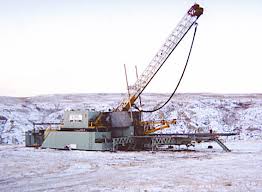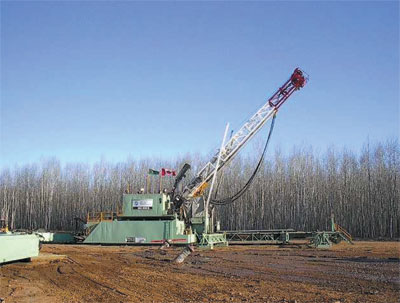In the world of drilling and oil exploration, innovation and technology have played a pivotal role in making operations safer, more efficient, and cost-effective. One such innovation is the slant rig, a specialized drilling rig that has gained prominence in recent years. In this article, we will explore the purpose of a slant rig, its advantages, and its applications in the oil and gas industry.

What is a Slant Rig?
A slant rig, also known as a directional drilling rig or a slant hole rig, is a type of drilling equipment used in the oil and gas industry. Unlike conventional vertical drilling rigs, slant rigs are designed to drill at an angle, allowing operators to access reserves that are located beneath challenging geological formations or in hard-to-reach locations.
How Does a Slant Rig Work?
The operation of a slant rig involves drilling a wellbore at an angle to the vertical axis. This is achieved by adjusting the inclination of the drilling equipment and controlling the direction of the drill bit. Slant rigs can drill at various angles, from a slight tilt to a nearly horizontal orientation, depending on the specific geological conditions and drilling objectives.
Enhanced Reservoir Access
One of the primary purposes of a slant rig is to access oil and gas reservoirs that are otherwise difficult to reach using vertical drilling techniques. By drilling at an angle, operators can navigate through complex geological structures, such as fault zones or salt domes, and reach deeper or more distant reserves.
Reduced Environmental Impact
Slant drilling can also have environmental benefits. It allows operators to access reserves from a single drilling pad, reducing the need for multiple wellheads and minimizing the surface impact on sensitive ecosystems. This can lead to lower land disturbance and a smaller environmental footprint.
Improved Production Rates
Another key purpose of slant rigs is to enhance production rates. By drilling at an angle, operators can intersect more reservoir rock layers, increasing the exposed wellbore surface area. This results in higher production rates and improved recovery of hydrocarbons from the reservoir.

Cost Savings
Slant drilling can be a cost-effective solution in certain scenarios. Instead of drilling multiple vertical wells to access the same reservoir, a single slant well can achieve similar results. This can lead to significant cost savings in terms of equipment, manpower, and operational expenses.
Oil and Gas Exploration
The primary application of slant rigs is in oil and gas exploration. These rigs are used to target reserves that are located beneath challenging geological formations, such as offshore deposits, subsalt reservoirs, and unconventional plays like shale gas.
Environmental Remediation
Slant drilling techniques are also employed in environmental remediation projects. They can be used to reach and extract contaminants or pollutants from the ground, helping to clean up contaminated sites and protect groundwater resources.
Geothermal Energy
In the field of renewable energy, slant drilling has found applications in geothermal energy production. By drilling at an angle, geothermal wells can access hot rock formations deep underground, harnessing geothermal heat for electricity generation. https://drillitco.com.au/
Technical Expertise
Using slant rigs requires a high level of technical expertise. Drillers must accurately control the direction and angle of the wellbore to ensure it reaches its target. Any deviation from the intended path can lead to operational problems or missed reservoirs.
Equipment Reliability
Slant drilling places additional stress on drilling equipment, which must withstand the forces generated when drilling at an angle. Ensuring the reliability and safety of equipment is crucial to the success of slant drilling operations.
Regulatory Compliance
Operators using slant rigs must comply with regulatory requirements, which can vary by location and jurisdiction. Environmental regulations, safety standards, and well spacing rules must all be considered when planning and executing slant drilling projects.
In conclusion, the purpose of a slant rig in the oil and gas industry is to provide a versatile and effective drilling solution for accessing challenging reserves. By drilling at an angle, slant rigs enhance reservoir access, reduce environmental impact, improve production rates, and offer cost-saving opportunities. These rigs find applications not only in oil and gas exploration but also in environmental remediation and geothermal energy production. However, it’s essential to acknowledge the technical expertise, equipment reliability, and regulatory compliance required to make the most of this innovative drilling technology. As the industry continues to evolve, slant rigs will likely play an increasingly significant role in meeting the world’s energy and environmental needs.

